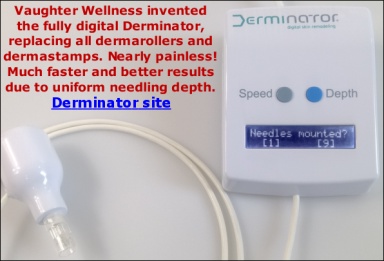Hi forum members!
Okay, so I have been researching benzoyl peroxide and I came across a summary article posted on "acne.org" regarding the FDA review on OTC benzoyl peroxide. The FDA concluded that the use of benzoyl peroxide is SAFE AND EFFECTIVE. I pasted the summary here:
"
The safety of Benzoyl Peroxide is periodically brought up by board members as an area of concern. Questions about whether it may increase skin cancer risk or cause DNA damage (and thus damage or accelarate the aging the skin) are the most common concerns. Given those concerns, I thought this information from the FDA was important to share with the messageboard members.
The FDA has updated its safety classification of Benzoyl Peroxide to a Category I (Safe and Effective). In 1991, the classification was listed as a type III, which meant that more data was needed before the FDA could determine the actual safety classification (it was never considered to be "unsafe" though). The body of the research conducted since that time has lead the FDA to change the classification to a safe and effective. I have the full article from the Federal Registry, for those who are interested in reading more details. I plan to post it in another thread. The abstract is below, and I highlighted a few points from the article as well.
Classification of Benzoyl Peroxide as Safe and Effective and Revision of Labeling to Drug Facts Format; Topical Acne Drug Products for Over-The-Counter Human Use; Final Rule
AGENCY: Food and Drug Administration,HHS.
ACTION: Final rule.
SUMMARY: We, the Food and Drug Administration (FDA), are issuing this final rule to include benzoyl peroxide as a generally recognized as safe and effective (GRASE) active ingredient in over-the-counter (OTC) topical acne drug products. In addition, this final rule includes new warnings and directions required for OTC acne drug products containing benzoyl peroxide. We are also revising labeling for OTC topical acne drug products containing resorcinol, resorcinol monoacetate, salicylic acid and/or sulfur to meet OTC drug labeling content and format
requirements in a certain FDA regulation. This final rule is part of our ongoing review of OTC drug products and represents our conclusions on benzoyl peroxide in OTC acne drug products.
Additional points of interest:
-They did not find BPO to be a genotoxic substance, which basically means they do not believe that it damages DNA. They go on to add that even though BPO has been shown in research to create oxidative damage, that in humans, there are oxidative repair mechanisms that would likely prevent benzoyl peroxide from causing DNA damage.
-They did not find BPO to be carcinogenic. They state: "We have reviewed a number of animal studies examining the carcinogenic potential of benzoyl peroxide and conclude that benzoyl peroxide is not a carcinogen." They also determined that there was no evidence to indicate that BPO is a photocarcinogen.
They are requiring an update to the warning labels on BPO products as well. Any OTC products that contain BPO will need to have the following warnings on the label:
• Avoiding unnecessary sun exposure
• Not using on very sensitive skin
• Keeping away from the eyes, lips, and mouth
• Cautioning that benzoyl peroxide may bleach hair or dye fabric
They will also require a direction for drug products containing benzoyl
peroxide to use a sunscreen when going outside." (
ARTICLE LINK)
If you prefer to read the WHOLE thing, you want to visit
THIS GOV. LINK.
-----------------------------------------------------------------------------------------------------------------------------------------------------
ANOTHER UPDATE ON MY REGIMEN:
Well, my skin has gotten CLEARER!!! Okay, last week, I got a little confident with the products and I layer 10% benzoyl peroxide over my Clearasil product (with 8% sulfur and 2% resorcinol) --- a day or two later my skin got very itchy and peeling. I had to use OTC 1% hydrocortisone cream from Aveeno and it got better. Phew! So, please don't try to be impatient with your skin and act brave and apply two strong strong product just to be aggressive with your pimples AND YOUR WHOLE FACE. I am apply 10% benzoyl peroxide in the morning and Clearasil at night.
I think I will discontinue 10% benzoyl peroxide and return to 2.5% benzoyl peroxide, which I will buy for cheap at acne.org. Acne.org offer affordable and bulk benzoyl peroxide products with not a lot of nonsensical ingredients in them.
[Update: Acne.org also offer an 10% glycolic acid product with a pH of 4.0-4.1.]
[Update 2: I want to add that I also apply that Clearasil product on my nose. It actually has help with the appearance of my blackheads problem, but not complete... yet?]
[Update 3: Here is my updated skin care products:
DaytimeCleanser: Neutrogena Fresh Foaming Cleanser
Scrub: Neutrogena Deep Clean Daily Long-Last Shine Control Scrub
Toner: Neutrogena Alcohol Free Toner (I rarely use this now. I just finishing it up. I use it when I have a lot of flakes)
Exfoliant: Paula's Choice 2% BHA liquid
Acne Medication: Clean and Clear Persa-Gel
Sunscreen: Neutrogena Ultra Sheer Liquid Daily Sunblock SPF 55
NighttimeCleanser: Neutrogena Fresh Foaming Cleanser
Scrubs: Neutrogena Deep Clean Daily Long-Last Shine Control Scrub or St. Ives Naturally Clear Green Tea Scrub (maybe 3-5X per week; I switch them around for fun. I am almost out of the latter)
Toner: Neutrogena Alcohol Free Toner
Exfoliant: Paula's Choice 2% BHA Liquid
Acne Treatment:Clearasil Adult Acne Treatment Cream, Tinted
Retinoid: Prescription Retin-A 0.1% (after approx. 30 min)]






